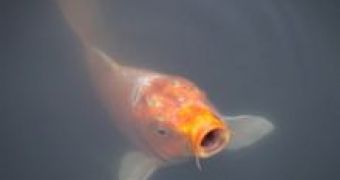Scientists at the University of Liverpool got an unusual insight into how animals can survive in environments with little or no oxygen. They discovered that the protein myoglobin - thought to act as an oxygen store in the heart and muscle cells of humans and vertebrate animals - also exists in many other tissues of the common carp, enabling it to survive in low oxygenated environments.
Myoglobin is found in large quantities in diving mammals such as whales and seals and helps them remain submerged for long periods during deep sea dives. Similarly in humans, myoglobin levels in the heart and some fatigue-resistant muscles increase when at high altitudes. New findings of myoglobin levels in the common carp could help scientists understand how humans could survive the loss of oxygen supply to their tissues during a stroke or a heart attack.
Professor Andrew Cossins and his research team discovered an entirely new form of the protein that exists only in the carp's brain, which is the first time any vertebrate animal has been found to possess more than one type of this protein.
Professor Cossins explains: "Our new findings suggest that this protein plays other roles in protection from low levels of oxygen in the tissues apart from storing oxygen, and we need to reassess its importance. It may be that the kind of damage caused in humans by low oxygen levels, could be countered by the therapeutic elevation of myoglobin levels or by other treatments that mimic its effects."
"This work shows how exotic animal models can give vital information on how living systems work. The carp is an unusual animal because it routinely copes with very challenging conditions that would harm or even kill lesser creatures. This is because the fish has evolved in small-to-medium sized ponds in a harsh continental-type climate in Asia where the winters are very cold and the summers are hot and steamy."
"Its ability to cope with such extreme conditions of temperature, lack of oxygen and dirty, sediment-laden water makes it a particularly good subject for working out how animals can tolerate stress because the underlying mechanisms are so exaggerated and displayed so clearly. We now need to investigate whether the protein is involved in sustaining normal blood flow through tissue capillaries and oxygen delivery during difficult times."

 14 DAY TRIAL //
14 DAY TRIAL //